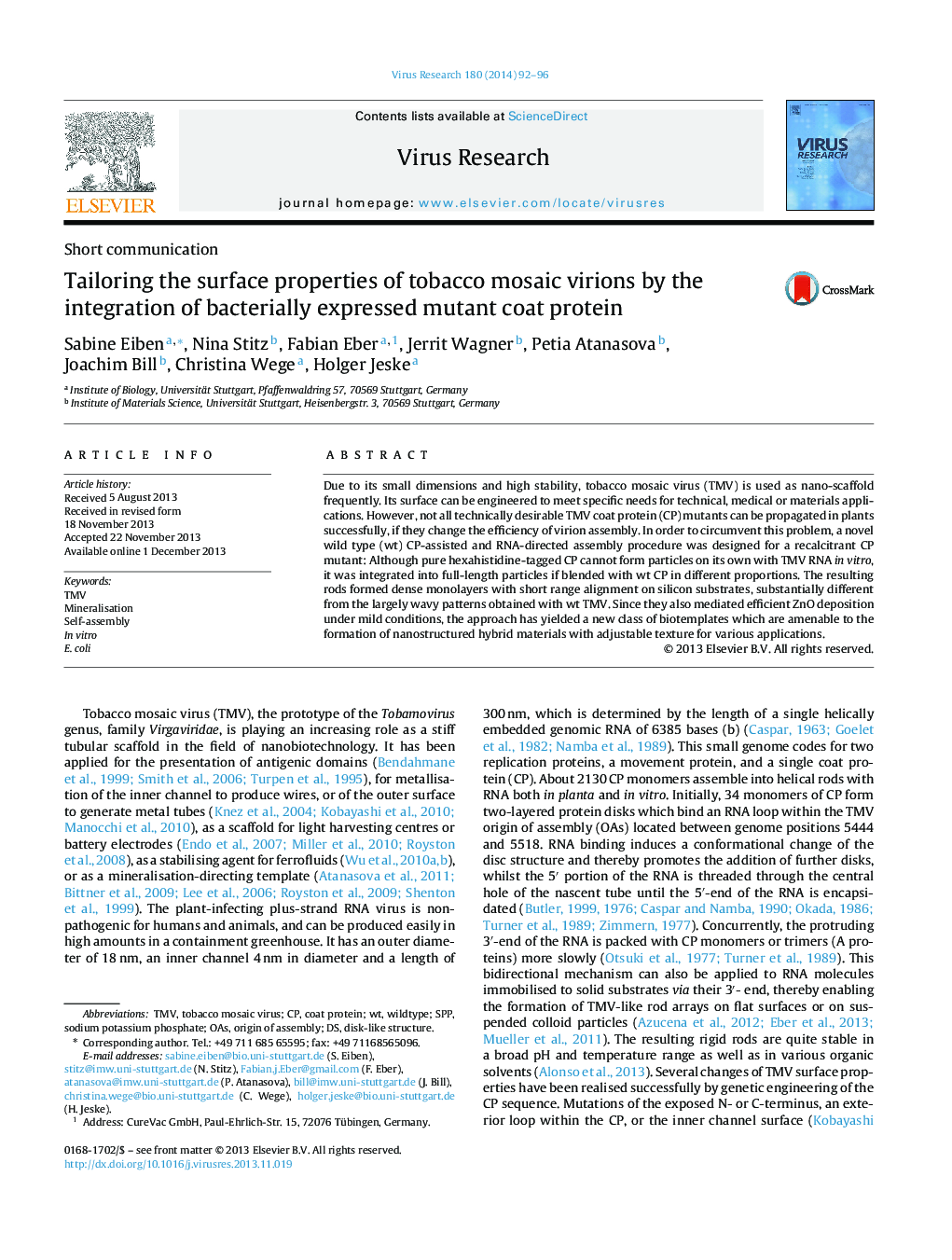| Article ID | Journal | Published Year | Pages | File Type |
|---|---|---|---|---|
| 6142579 | Virus Research | 2014 | 5 Pages |
â¢Expression of TMV coat protein mutants in E. coli.â¢Mixed encapsidation allows in vitro RNA-directed assembly of E. coli-derived coat proteins.â¢Optimisation of convective assembly conditions for as-produced blended virus-like particles.â¢Basics for mineralisation established.
Due to its small dimensions and high stability, tobacco mosaic virus (TMV) is used as nano-scaffold frequently. Its surface can be engineered to meet specific needs for technical, medical or materials applications. However, not all technically desirable TMV coat protein (CP) mutants can be propagated in plants successfully, if they change the efficiency of virion assembly. In order to circumvent this problem, a novel wild type (wt) CP-assisted and RNA-directed assembly procedure was designed for a recalcitrant CP mutant: Although pure hexahistidine-tagged CP cannot form particles on its own with TMV RNA in vitro, it was integrated into full-length particles if blended with wt CP in different proportions. The resulting rods formed dense monolayers with short range alignment on silicon substrates, substantially different from the largely wavy patterns obtained with wt TMV. Since they also mediated efficient ZnO deposition under mild conditions, the approach has yielded a new class of biotemplates which are amenable to the formation of nanostructured hybrid materials with adjustable texture for various applications.
Graphical abstractIntegration of Escherichia coli-derived mutant coat protein into tobacco mosaic virus particles by mixed assembly as a means to tailor the viral surface properties for materials applications.Download full-size image
